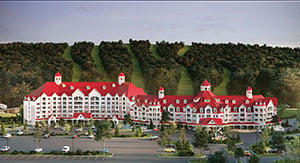3 min read
The Storied History of Lincoln, New Hampshire
RiverWalk Author
:
Apr 11, 2023 12:11:57 PM
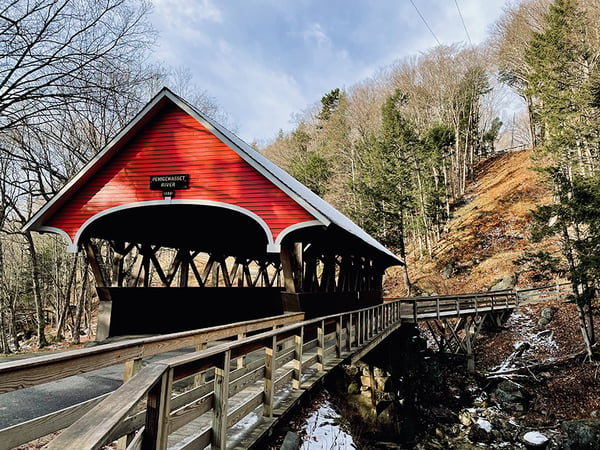
Lincoln, New Hampshire is known for many things…the scenic Flume Gorge, skiing at Loon Mountain, stunning Franconia Notch State Park, and in winter, the fabulous Ice Castles. But did you know that the town of Lincoln has industrial roots dating back to 1892?
Today, we’d like to take you on a tour of some of the area’s most notable events from its inception to today. Let’s get started!
The Beginning
Long before it was inhabited by white settlers, Lincoln was a beautiful and inspiring location known mostly to the Abenaki. We know this as in 1805, Francis Whitcomb and Luke Brooks began to write about a sight that would grace the New Hampshire quarter and many other official documents and tourism pieces for years and years – The Old Man in the Mountain. However, the majority of people didn’t see it until much later as the area was largely uninhabited and impassable.

In 1829 a gazetteer described it as "a rough, mountainous township, replete with wild animals, poor agriculture, and largely unfit for human habitation."
While it was technically incorporated in 1764 and named in honor of the ninth Earl of Lincoln, Henry Clinton, the true story of Lincoln as we know it today began in 1892 when James E. Henry brought industry to the area. After all, when he first stepped on the scene, just 110 people lived in the area.
Henry was directly responsible for propelling the town forward. He constructed homes for his workers, as well as all the other “firsts” in the community. He was behind the creation of the saw mill in 1894, the first store, a hospital, a hotel, boarding houses, the post office, churches, and in 1893, even a railroad for logging. The last of which gave rise to paper milling that lasted through 1980. It also marked the beginning of tourism, which continues to be important in the area to this day.
Henry as well as his sons were also a part of the government of Lincoln. From selectman to justice of the peace, they were each part of the town’s fabric in every way possible.
The Rise & Fall of the Mills
Unfortunately, in 1899 the saw mill was destroyed by a fire and had to be rebuilt. After the rebuild, a pulp mill and paper mill opened between the years of 1901-1902 and that new mill would ultimately outlast the original saw mill which closed its doors in 1908.
In 1917 the paper and pulp mill was sold to the Parker Young Company for the sum of 3 million dollars.
Fun Fact: Sherman Adams, a Lincoln paper mill employee would later become the Governor of New Hampshire and go on to open Loon Mountain Resort.
In 1927 the paper mill was destroyed by a flood and was, like the saw mill before it, rebuilt. After that it was eventually sold to Marcalus Manufacturing in 1946 and it became the Franconia Paper in 1960. Little did they know that it would change names several more times.
In 1973 it became the Profile Paper Company, then it changed again in 1975 to the New England Pulp and Paper Company, and finally it returned to its original name, Franconia Paper in 1978. Unfortunately, it didn’t last. The mill officially closed on June 11, 1980, forever.
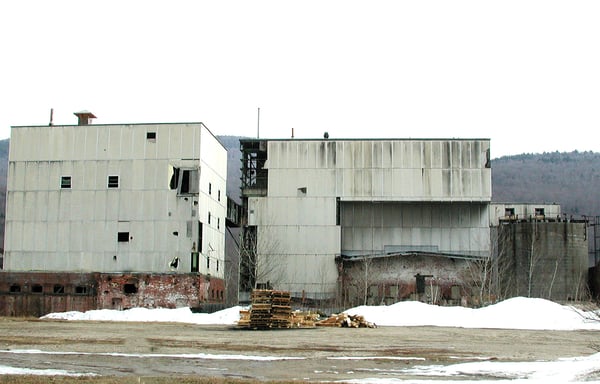
The 80s & 90s
Starting in 1987 the North Country Center for the Arts (NCCA) began operating the Papermill Theater out of a converted machine room. The Theater hosted 80 productions including Carnival, Harvey, Deathtrap, and Cabaret, over their 23 year run and won numerous awards. This new venture gave rise to the arts in a community that continues to thrive today.
Fun Fact: Rachel White Adams, the wife of former assistant to President Eisenhower is widely credited as the originator of the New Hampshire arts movement due to her work with The New Hampshire Commission on the Arts and her service as a New Hampshire Youth Orchestra Trustee. She also published a renowned autobiography, “On the Other Hand,” in 1963 and received the Ben Thompson Award from the University of New Hampshire in 1959. Nowadays, there is even a scholarship offered in her name through New England College for excellence in visual or performing arts.
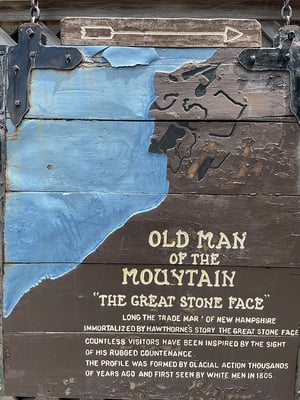 The Aughts
The Aughts
Possibly the most notable New Hampshire news story of 2003 was the fall of the Old Man in the Mountain. The natural splendor had drawn tourists for many years. It was a sad day for New Hampshire and for Cannon Mountain, but now we get to remember it by visiting The Old Man of the Mountain Profile Plaza and The Old Man of the Mountain Museum in the Tram Lodge.
In the early 2000s (2009 to be exact) the defunct paper mill was demolished and in 2012 it was replaced by Jean’s Playhouse. The Playhouse was named for Jean Hallager, an avid supporter of the NCCA and active community member.
In 2016, RiverWalk catapulted the tourism industry forward by building on the site of the former paper mill as well. Since the first day we opened our doors, people have come from all over during all seasons to experience the wonder of the White Mountains in style.
In fact, the success of our Resort has been so phenomenal that we are actively expanding. Our newest facility is expected to open in spring 2024.
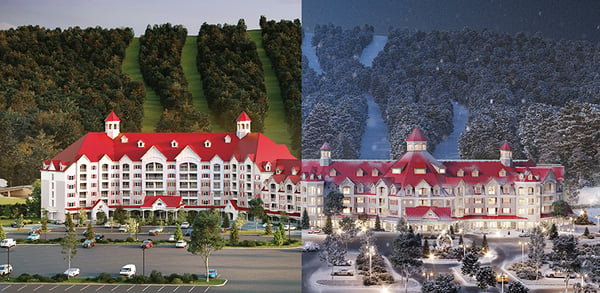
Lincoln, New Hampshire is about keeping the past in mind and using it in conjunction with new innovations to create the future. We hope you visit our region, and hopefully RiverWalk soon. There’s nothing quite like it.

